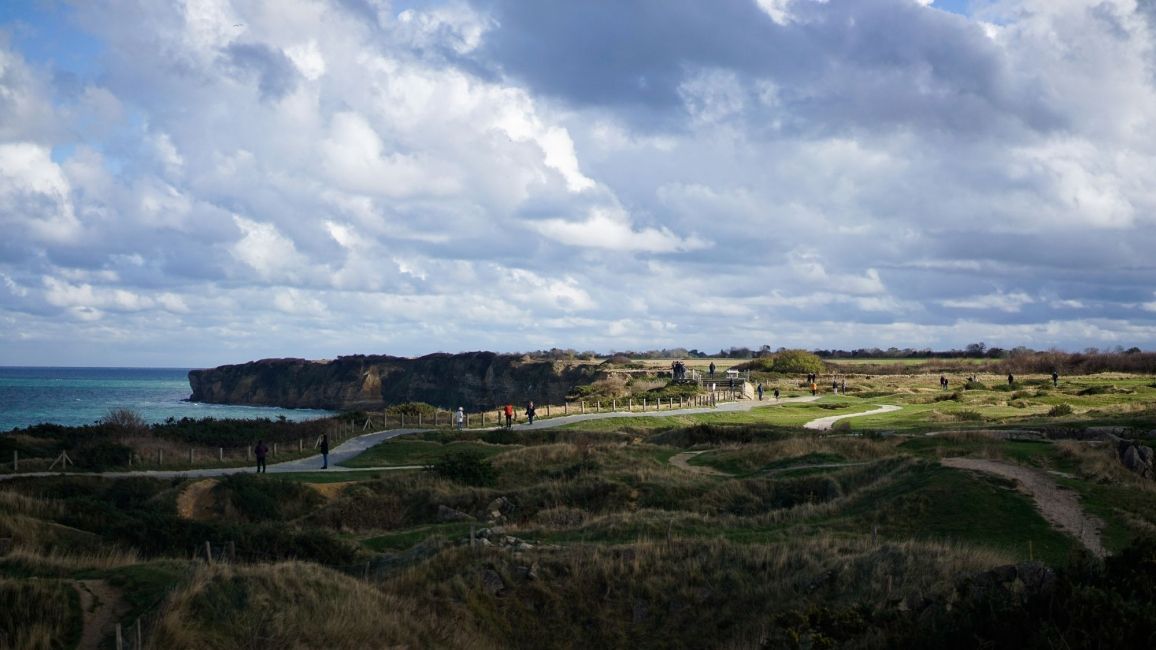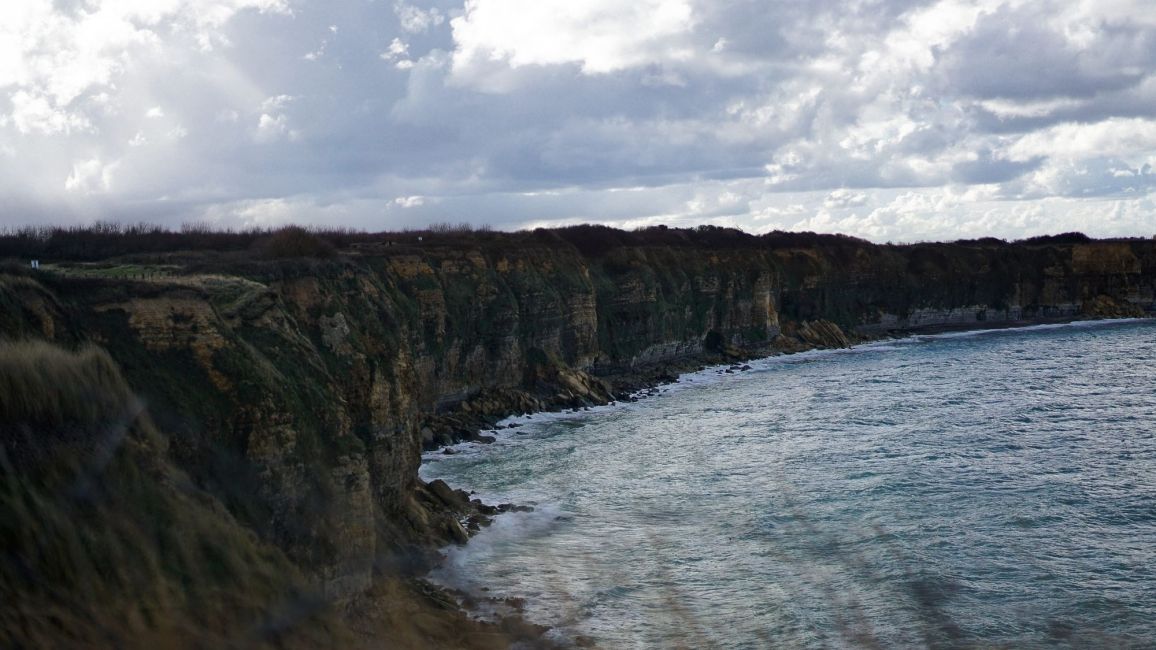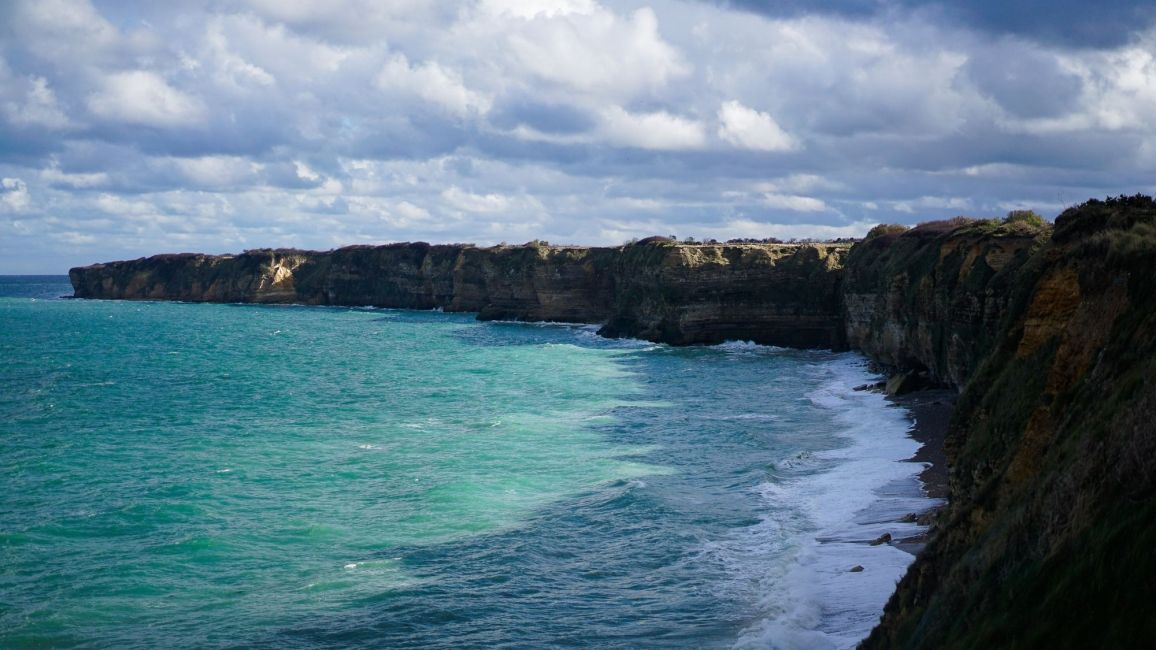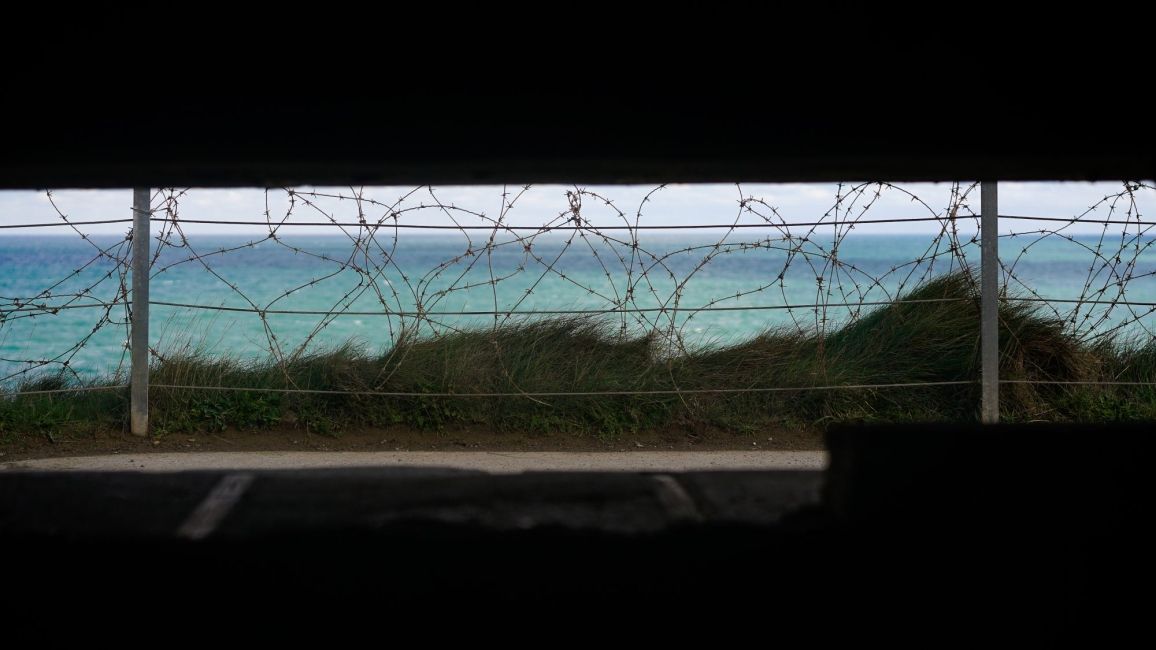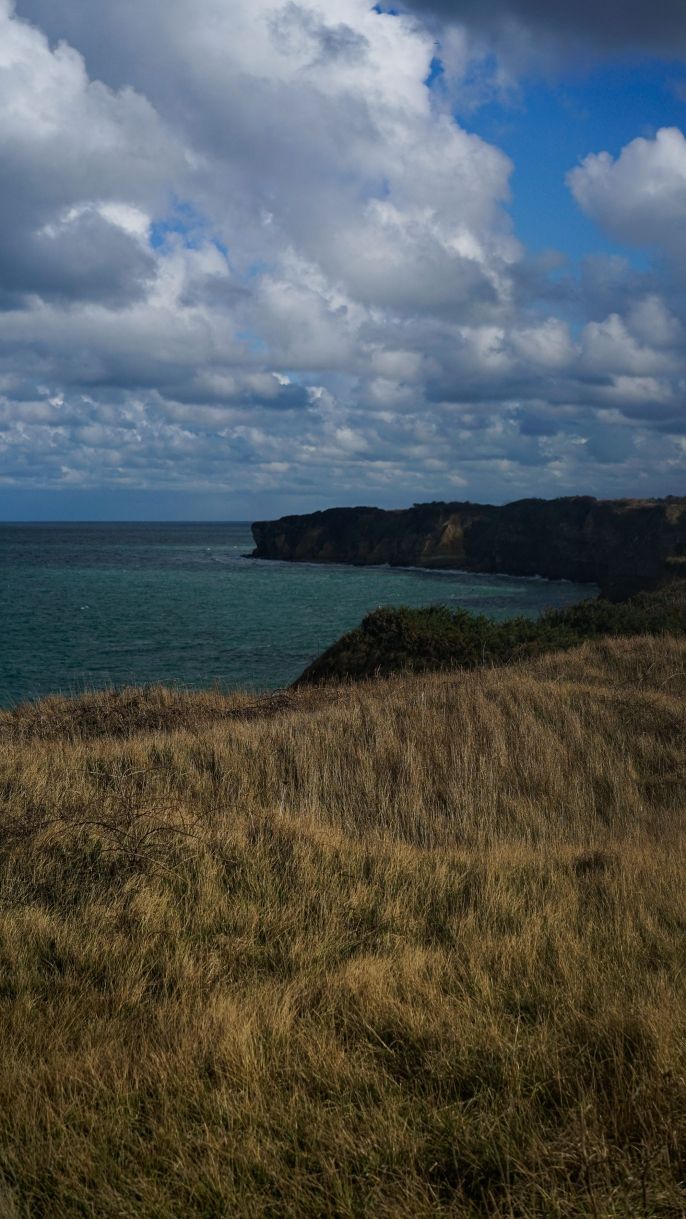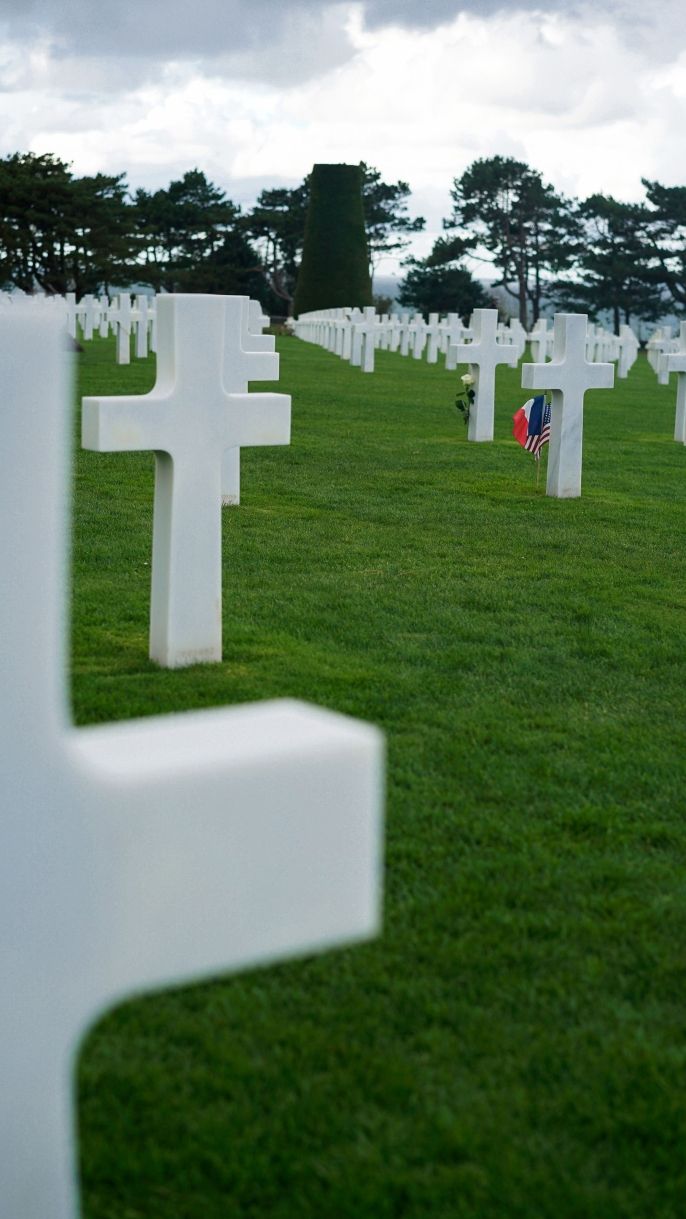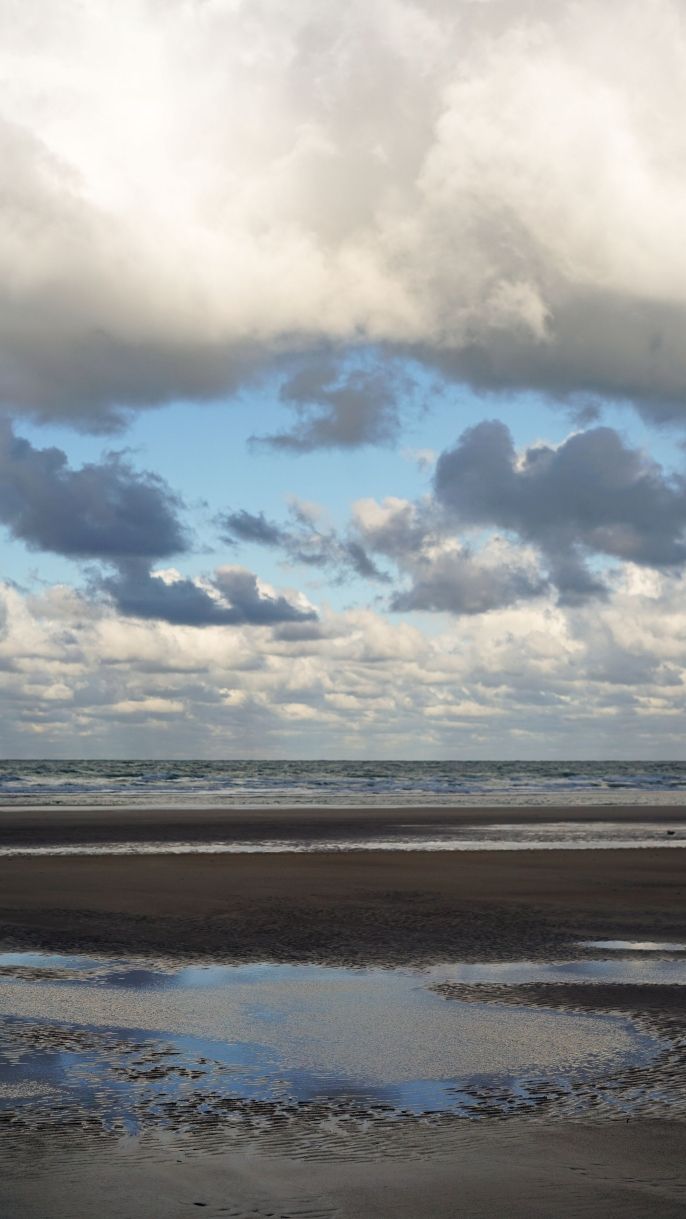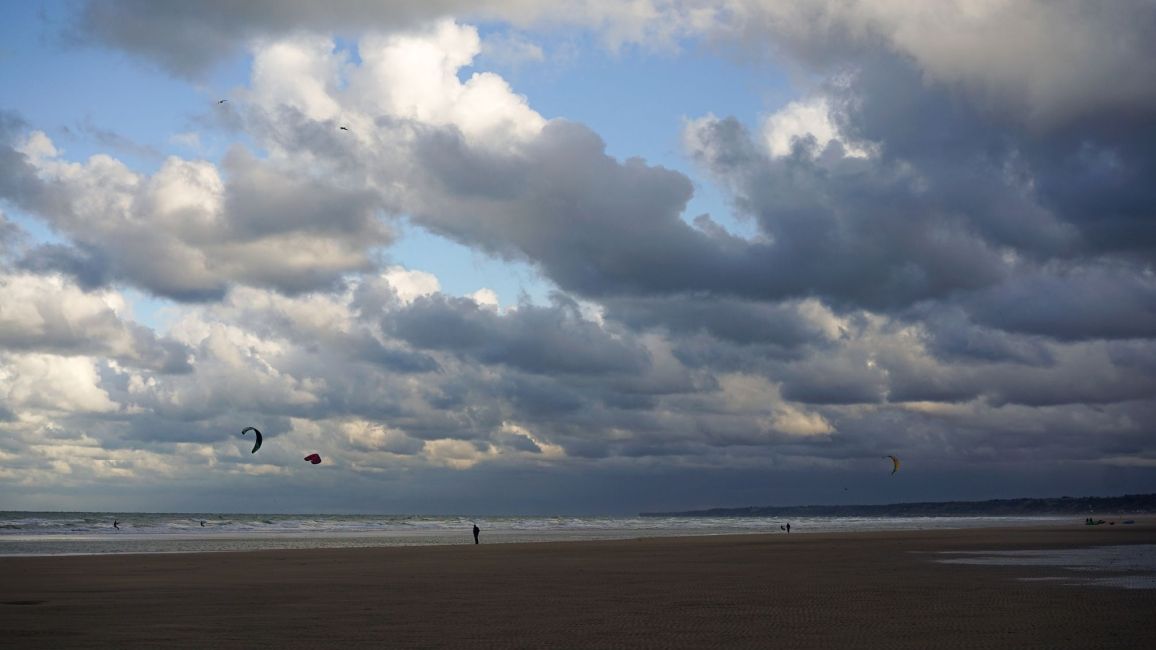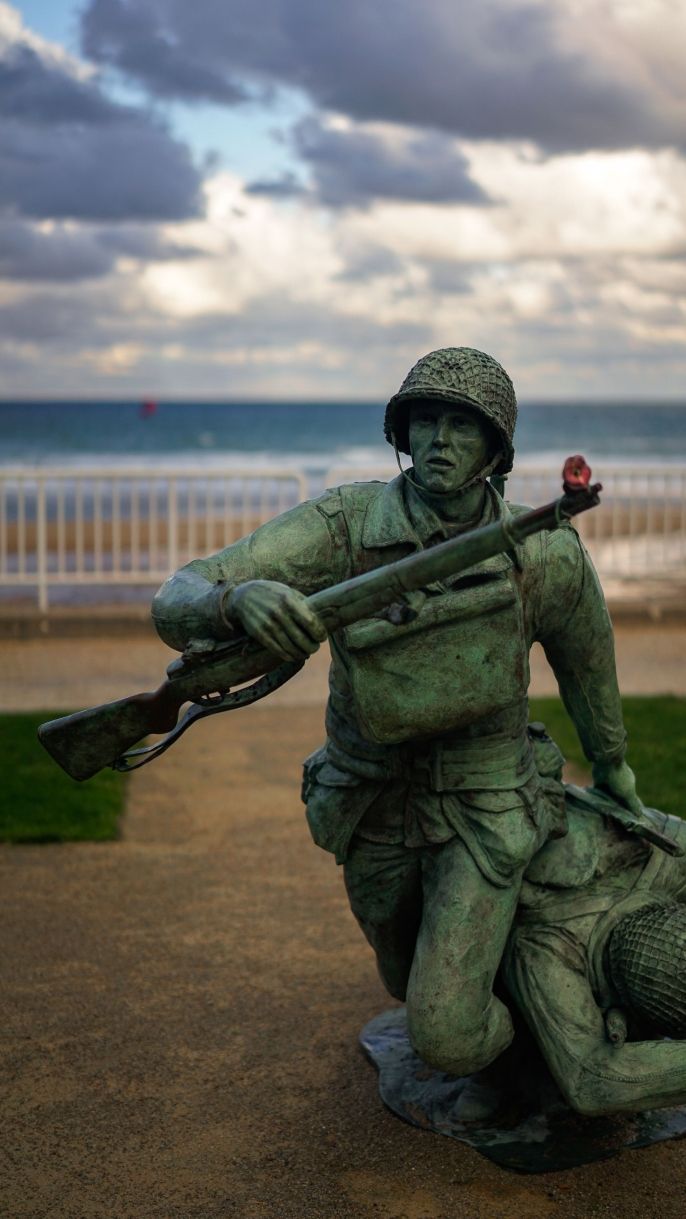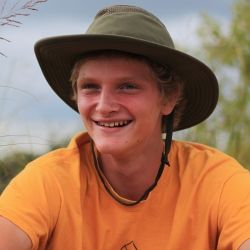World War 2 D-Day Sites
Visiting the D-Day beaches has been on my radar ever since I got to France. Yesterday I was fortunate enough to participate in the afternoon tour of three different WW2 sites. Pointe Du Hoc, the American cemetery and Omaha Beach.
After boarding a 10 person van with other Americans and Englishmen, even one woman who lives 20 minutes north of my hometown in Wisconsin, we were introduced to our very passionate, exciting and interesting tour guide. He drove us along the northern coast of Normandy, through farmland and past old grey churches towards the D-Day sites. Arriving at Pointe Du Hoc felt straight out of a movie. Visually, the site was beautiful. Blue sky with white clouds met an aqua, wavy ocean that crashed into an earthy, green and orange cliff. Pointe Du Hoc looked like a battlefield in every way one would imagine it to. The ground was far from flat, every couple feet there would be bomb craters that sunk at least 10 feet deep. Our guide explained the importance of this site, and how a couple hundred US special forces, outnumbered and outgunned, climbed the cliffs, took the position and held it for two days. After two days of battle the 225 special forces were down to just 90. Our guide also explained that if it wasn’t for this site and these 225 men, the other victories at D-Day probably would not have been possible. These special forces not only blocked German reinforcements from reaching Omaha and Utah beach, but also disabled some of the German guns which would have made the landings of the other two battles impossible.
The next site was the American cemetery, a 15 minute drive from Pointe Du Hoc and right above Omaha Beach. Our guide explained each part of the cemetery and the meanings behind it. The red rock, which served as the walking path through the cemetery represented the blood that was shed on the beach and the trees lining this path had the tops of them cut short, representing the lives of soldiers that were cut short. It was difficult to believe this cemetery was in France, it felt more like a memorial in Washington D.C than in Normandy, France. At the stroke of 4:00 Taps was played, the American flag was lowered and folded, again it was hard to believe this was in France. It was an amazing feeling, France had honored this land to the American lives that were lost in this war. The entire tour was emotional and at times difficult, but it was at this American cemetary where a few tiny tears finally broke out. When thinking about WW2, I think the relationships between the Ally powers is often forgotten, but standing in the American cemetery, surrounded by endless graves of Americans who died in Normandy, really forces one to consider the relationship, cultural exchange and bond that France and the US had. French and Americans had created bonds, worked together and died for each other on these grounds. It makes something like CIEE and the cultural exchange I’m experiencing with my host family feel small and insignificant, in the best way possible.
From there we moved towards the water onto Omaha beach. (If you have ever seen "Saving Private Ryan", this beach is the location of the first, brutally violent scene). We stayed in the car, avoiding the cold and wind, while our guide explained this site, told us how the entire plan went horribly wrong and how many American lives were lost on this beach (around 2000). He explained to us that if it wasn’t for a few naval ships, who disobeyed orders and joined the fight, the Americans may have never taken the beach. Very different from Pointe Du Hoc, this did not look like a war site, but just a normal, huge beach. Our group, while looking out the window, watched people wind surf and listened to our guide explain how today, in 2018, this is a popular vacation beach for French and non-French families. The group, including myself, felt visibly uncomfortable. It didn’t seem right that families could be building sandcastles where so many men suffered and died. Our guide clearly saw our disapproval and was quick to counter it, asking “Isn’t that exactly what they fought for?” Of course he was right, American soldiers perished here to free France from German occupation, so that they could do things like enjoy their beaches and country.
At the end of our tour, our Norwegian guide, thanked each of us, for the sacrifices that our “forefathers” made. He told us that if it wasn’t for them, his life would not be possible. It shook me, and definitely didn’t feel like something I could take credit for or say “your welcome” to. Though it gave me a feeling that I can’t quite explain. A mix of pride for the American generations that have been in Normandy before me and content thinking about the bond that France and the US built during these hard times.
Related Posts
Judaism in Toulouse
For about a year before leaving for Toulouse, I studied Hebrew and Judaism mostly through Zoom with a private tutor and another student close to my age. In our last... keep reading
My Homestay Experience
In the months leading up to my departure for Toulouse, my mom and friends told me that speaking French everyday with my host family would be the best way to... keep reading

Studying Abroad in the Time of COVID-19
Based on an interview of Mia Merk, CIEE Gap student in Fall 2020 (September 28-December 19) in Toulouse, France As early as her Junior year of High School, Mia had... keep reading
